Prepared by Lori and Birgita
We’d like to start this update by reassuring people that the lack of updates for so long does not mean nothing has been happening in the snipe project – quite the opposite!
Since last year, we have had a new series of tracking efforts going on, both in ACT and in Japan. Lori has been undertaking tracking as part of her PhD with a different type of tag, with great success (see below). And the Wild Bird Society of Japan deployed more 2g solar PTTs in Hokkaido last year, and now have 5 snipe that have migrated to Australia and 3 that also returned to Japan.
We have also completed another season of national snipe surveys, which have produced some fascinating results.
ACT tracking update 28th February 2023
This Snipe season we set out to attach up to 20 small 3.5g GPS bluetooth devices to Latham’s Snipe at Jerrabomberra Wetlands (ACT) to investigate fine scale local movements and behaviour to inform habitat use (and land management more broadly). These bluetooth devices rely on a base station or iphone to detect and download the data, and we made an educated guess that a proportion of the birds would stay at the wetlands for us to receive data from. These devices are a lot cheaper and more accurate than PTT satellite trackers ($150 compared with $6000 each) so we were able to purchase more of them. We then constructed a tower using an aerial attached to some conveniently located cattle yards to elevate a hub (base station) to expand the Bluetooth range from 80m on our phones to 800m. After a few teething issues this hub has worked well.

The plan was that the devices would stay affixed to the birds for up to 2 months after which time they would fall off, so the bird didn’t have to carry them when data wasn’t being collected (i.e. when they leave for migration).
So in early December we set out after sunset to set up nets ready for our first catch the next morning on the 10th December. We caught two birds. We did this again on the 11th December and caught five birds. Not a bad start. We attached the devices with beading elastic using leg loop harnesses and all birds seemed healthy and well (unlike the 25 volunteers who were all very tired from getting two hours sleep for two nights). Straight away we were getting high quality track data from five of the seven birds which was more than what we had initially ever dared to hope for. Although the choice of these Bluetooth devices was well researched, they had not been used on wader birds such as Latham’s Snipe before.
Bolstered by our success, we organised another catch for the 13th and 15th January. Again, our wonderful volunteers put their hands up to help and included people from the Japanese embassy, ACT Parks and Conservation Service, Canberra Ornithologists Group, Australian National University, CSIRO, the Woodlands and Wetlands Trust and the ACT Young Rangers Club (many of whom were 8 years old when the Latham’s Snipe project started in 2015 and are now highly skilled birders and research assistants). The volunteers deserve special mention because without their involvement we couldn’t do this work.
This time we managed to catch a whole zero / nil / nada on the first night and we were a bit disappointed. Although usually a reliable catching spot, the water levels had risen and many of the birds had obviously found somewhere better to hang out. Not to be outdone, we had a group huddle around the big TV at the wetlands to look at where the birds we had already tracked were going. We found our Snipe hotspot! So out we went on the Saturday night and counted 38 birds leaving their roost site to feed for the night. Once they left, we assembled the nets in an H shape and decided on three flush teams for the morning. We also set up a net at a wetlands we affectionately know as the ‘Ditch’. Well, the next morning, things went like clockwork and we caught 12 birds – the most we have ever caught in one morning!
The birds were processed by our highly skilled teams of volunteers and the were trackers affixed. The birds were all released successfully. We received data from all of these birds and the technology was working really well. Many of the volunteers agreed to put the ‘Ecotopia’ app on their phones so that we had lots of people out scanning for birds when they were out and about. So by now we have 19 out of the 20 trackers on birds. Having one tracker left to deploy was too much to bear, so we organised an impromptu mini-catch in the ‘Ditch’ on the 19th January and to our absolute amazement, we caught just one bird and it was one we had put a leg flag on in 2018! So… job done.
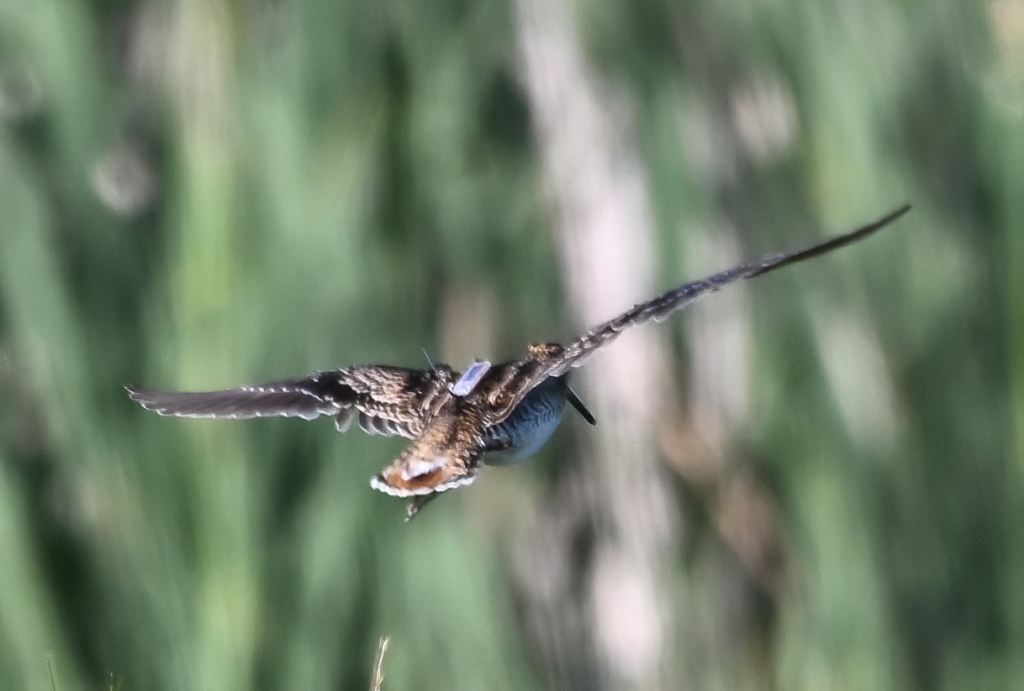
The results so far have been amazing. We obtained high quality data from 16 out of the 20 birds for most of January which dropped to 12 birds for most of February and then down to 5 birds at the end of February. We are talking thousands of data points which will be analysed in coming months, but the preliminary observations are as follows:
- Most of the birds haven’t left Jerrabomberra Wetlands for any length of time and roost in the main part of the Jerrabomberra wetlands during the day, then head over to the grass-growing area (Canturf) or the paleo-channel area to the north during the night to feed.
- We recaptured 3 birds from previous years, one of which has been coming back to the wetlands for 5 years.
- Some birds go on long journeys to feed. For example several birds travelled 20-30km to feed at night and then returned to the wetlands to roost. They leave around 8pm and return at around 6am.
- One bird travelled all the way to Nowra on the NSW south coast for a couple of days but then returned to the wetlands
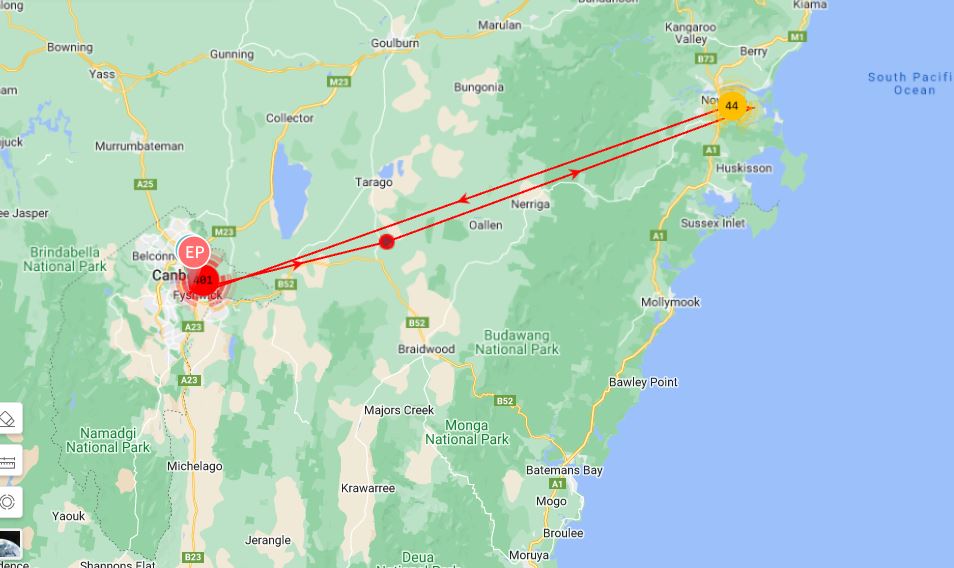
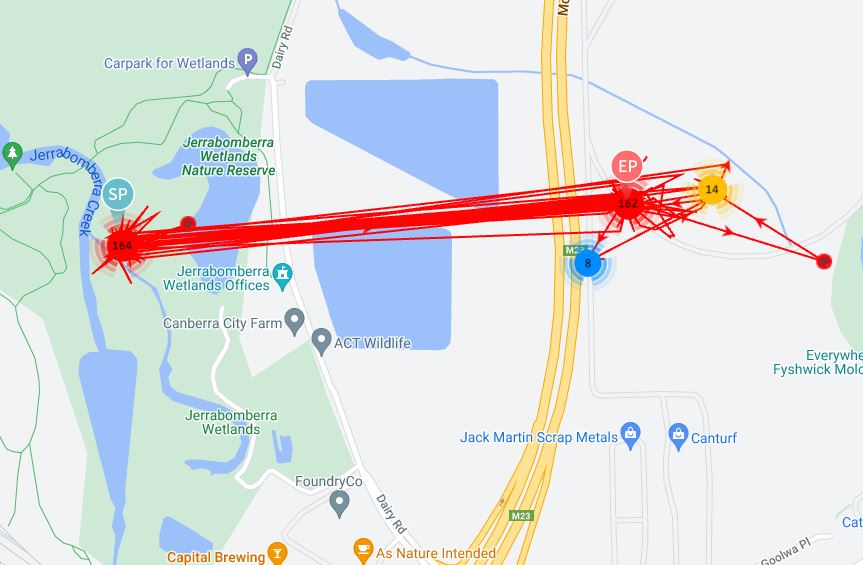
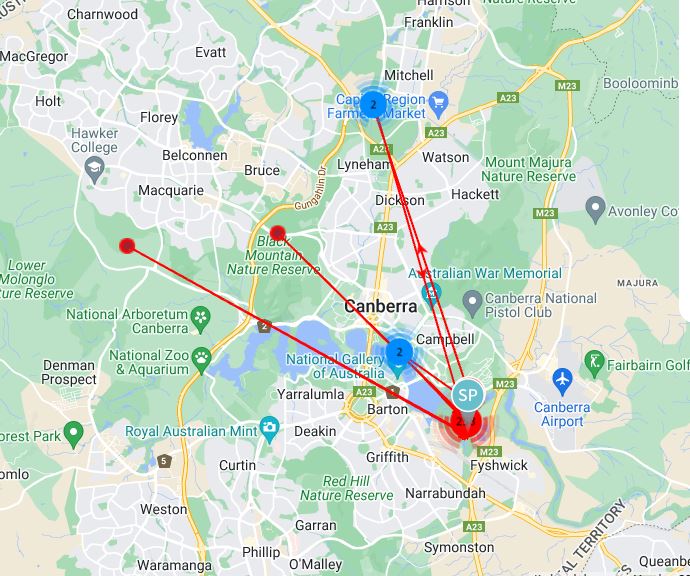
The success of these devices and the data received has been way beyond our expectations and we are now wondering whether the devices will stay attached for migration. If they do, it is highly likely that a proportion of birds will return to the wetlands next season due to their apparent site fidelity. We will not get ahead of ourselves yet, but we will set the devices accordingly just in case.
The Latham’s Snipe project team would like to extend our sincere thanks and appreciation for the many volunteers and supporters. As mentioned earlier, we couldn’t do it without them all.

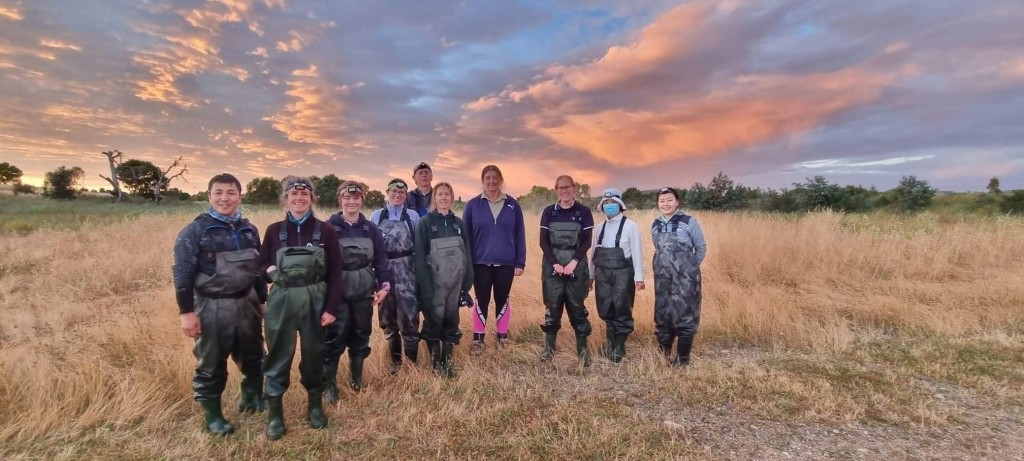
Wild Bird Society of Japan tracking
Between 2020 and 2022, the WBSJ have deployed 10 2g solar PTTs (Microwave Telemetry) and have had tremendous success with these smaller tags, affixed to birds using leg loop harnesses. In 2021-2022, three birds migrated to Australia and spent their non-breeding season across a range of different areas in eastern Australia, ranging from coast Victoria to the ACT and NSW alps, western Sydney wetlands and northern NSW tablelands farmland.
In 2022-2023 two more tagged snipe made their way to Australia and one spent the early part of the season in Corner Inlet (eastern Victoria) and the other was in production landscapes west of Cowra in NSW. More information to follow.
National Snipe Surveys
The national surveys produced some amazing results this season. Some sites broke their own records like Moyne estuary in Port Fairy, where 188 snipe were recorded in September and 211 snipe were recorded in November! Sites like Peterborough, Fox Lake and Smithton all had high numbers of snipe again. But then there were some surprises too, like Phillip Island which had zero snipe in November!
The data entry is still being done, and we won’t now the final numbers for the season for a few weeks. However, it looks like this very wet season in eastern Australia is going to produce some really intersting results. Birgita would like to thank Jack Winterbottom for his able assistance with data entry.